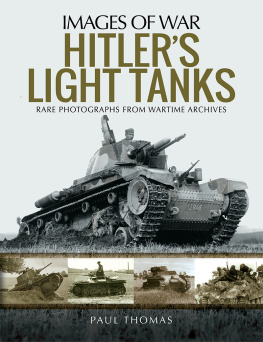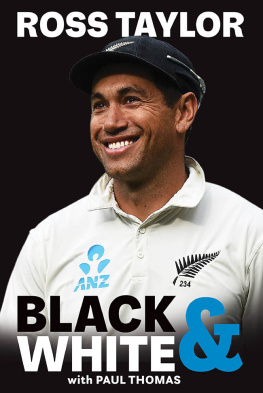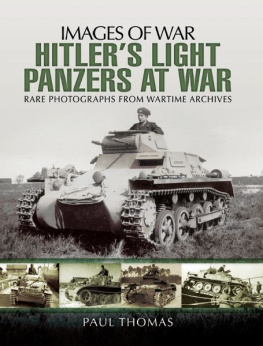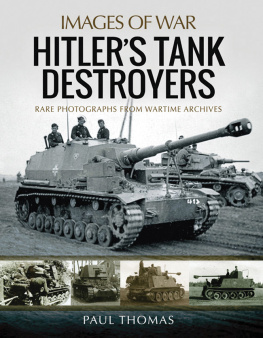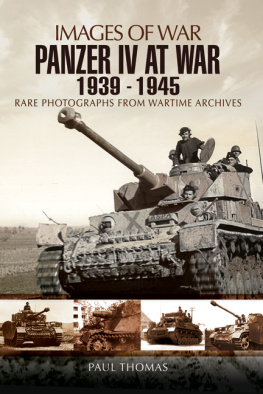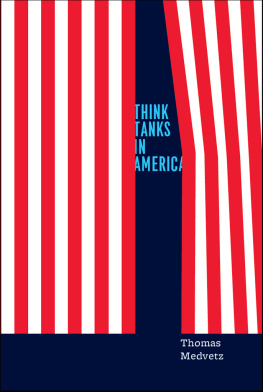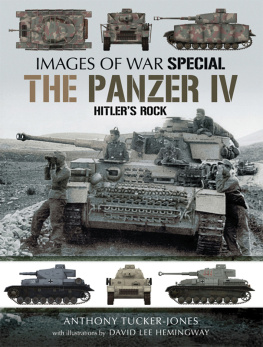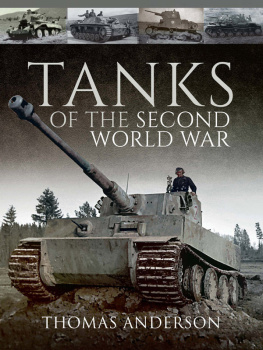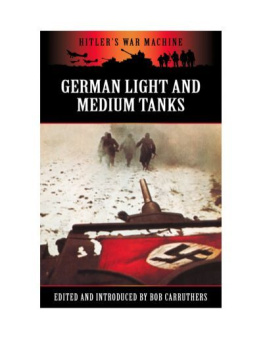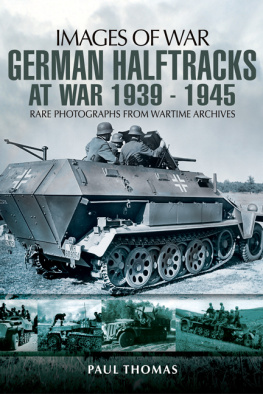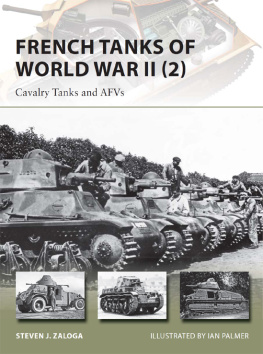Paul Thomas - Hitlers Light Tanks
Here you can read online Paul Thomas - Hitlers Light Tanks full text of the book (entire story) in english for free. Download pdf and epub, get meaning, cover and reviews about this ebook. year: 2019, publisher: Casemate Publishers & Book Distributors, LLC, genre: Science fiction. Description of the work, (preface) as well as reviews are available. Best literature library LitArk.com created for fans of good reading and offers a wide selection of genres:
Romance novel
Science fiction
Adventure
Detective
Science
History
Home and family
Prose
Art
Politics
Computer
Non-fiction
Religion
Business
Children
Humor
Choose a favorite category and find really read worthwhile books. Enjoy immersion in the world of imagination, feel the emotions of the characters or learn something new for yourself, make an fascinating discovery.
- Book:Hitlers Light Tanks
- Author:
- Publisher:Casemate Publishers & Book Distributors, LLC
- Genre:
- Year:2019
- Rating:3 / 5
- Favourites:Add to favourites
- Your mark:
- 60
- 1
- 2
- 3
- 4
- 5
Hitlers Light Tanks: summary, description and annotation
We offer to read an annotation, description, summary or preface (depends on what the author of the book "Hitlers Light Tanks" wrote himself). If you haven't found the necessary information about the book — write in the comments, we will try to find it.
Hitlers Light Tanks — read online for free the complete book (whole text) full work
Below is the text of the book, divided by pages. System saving the place of the last page read, allows you to conveniently read the book "Hitlers Light Tanks" online for free, without having to search again every time where you left off. Put a bookmark, and you can go to the page where you finished reading at any time.
Font size:
Interval:
Bookmark:

IMAGES OF WAR
RARE PHOTOGRAPHS FROM WARTIME ARCHIVES
Paul Thomas

First published in Great Britain in 2019 by
PEN & SWORD MILITARY
An imprint of
Pen & Sword Books Ltd
47 Church Street
Barnsley
South Yorkshire
S70 2AS
Copyright Paul Thomas, 2019
ISBN 978-1-52674-166-0
eISBN 978-1-52674-167-7
Mobi ISBN 978-1-52674-168-4
The right of Paul Thomas to be identified as author of this work has been asserted by him in accordance with the Copyright, Designs and Patents Act 1988.
A CIP catalogue record for this book is available from the British Library.
All rights reserved. No part of this book may be reproduced or transmitted in any form or by any means, electronic or mechanical including photocopying, recording or by any information storage and retrieval system, without permission from the Publisher in writing.
Pen & Sword Books Limited incorporates the imprints of Atlas, Archaeology, Aviation, Discovery, Family History, Fiction, History, Maritime, Military, Military Classics, Politics, Select, Transport, True Crime, Air World, Frontline Publishing, Leo Cooper, Remember When, Seaforth Publishing, The Praetorian Press, Wharncliffe Local History, Wharncliffe Transport, Wharncliffe True Crime and White Owl.
For a complete list of Pen & Sword titles please contact
PEN & SWORD BOOKS LIMITED
47 Church Street, Barnsley, South Yorkshire S70 2AS, England
E-mail:
Website: www.pen-and-sword.co.uk
F rom the early successful operations of the Blitzkrieg campaigns between 1939 and 1940 in Poland and on the Western Front, to the mid-war battles in Russia in 194243, Hitlers Light Tanks is a well documented and superbly illustrated record of German light tanks. Using rare and unpublished photographs, it represents an excellent visual account of the various light tank units of the Wehrmacht, initially equipped with the Panzer I, II, 35(t), 38(t) and its variants.
With detailed captions and text the book tells the story of how the light tank was adapted to survive on the battlefield against the ever-increasing threat of larger and more powerful Russian armoured vehicles. It reveals how the Panzer I, II, 35(t), 38(t) during its mid-war period were produced with a wide variety of self-propelled mounts. These included the 2cm FlaK and KwK 7.62cm and 7.5cm PaK and 15cm guns on variations that included a revised mid-engine hull. From this small armoured command vehicle the Germans built their first tracked tank killers, or Panzerjger.
As the threat in Russia intensified a number of the Panzer 38(t)s were modified and this book shows them converted into the Marder III Panzerjger. (tank destroyer); with the German 7.5cm gun in open-top superstructure; the Marder III (SdKfz.139) German tank destroyer; the Soviet 76.2cm gun in open-top superstructure; the SdKfz.138/1 Grille German self-propelled gun; the German 15cm heavy infantry gun; and the Munitionspanzer 38(t) (Sf) Ausf. K (Sd.Kfz.138/1) ammunition carrier variant, which carried ammunition for the SP gun. There was the Flakpanzer 38(t) German self-propelled anti-aircraft gun; the 20mm FlaK 38 anti-aircraft gun; the SdKfz.140/1 Aufklrungspanzer 38(t) mit 2cm KwK 38 reconnaissance tank with 20mm turret from an Sd.Kfz.222 armoured car; and the Sd.Kfz.140/1 Aufklrungspanzer 38(t) mit 7.5cm KwK 37 L/24 close-support reconnaissance tank with 7.5cm gun mounted in a modified superstructure. All of these vehicles fought extensively on the eastern front in a desperate attempt by the Panzerwaffe to survive.
This book shows that although the light tank was relatively successful on the battlefield, their size and thin armour often limited their effectiveness. The light tanks were constantly required to support troops on the battlefield, as well as fighting offensive and defensive missions. As a result many paid a high price, but in spite of the losses, these light tanks and their modified variants fought on until the last days of the war.
A s the war clouds gathered over Europe and Hitlers vast army was poised to attack, his Panzerwaffe (comprising over 2,700 Panzers) formed up along the borders of Poland ready to strike. Only 60 per cent of Germanys armoured force were committed to operations against Poland due to maintenance issues. Most of the Panzers used were known as light tanks. These comprised mainly the Panzerkampfwagen I, the Pz.Kpfw.II, and the Czech-built Pz.Kpfw.35(t) and Pz.Kpfw.38(t).
Hitler had envisaged a fast moving armoured army of tanks that would spread fire and devastation like the world had never seen before. Against Poland, his light tanks would play the main part in his grand strategy, using Blitzkrieg tactics for the first time.
On 1 September 1939, Hitlers light tanks were unleashed against the Polish army. The Pz.Kpfw.I, which was the main light battle tank at this time, gave a promising introduction to what the Germans could achieve in tank design, and in Poland it would be used extensively. The tank featured a crew of two, a driver and a commander, the latter also used as the gunner. The driver sat in the forward hull of the cramped vehicle on the left, while the commander occupied the turret to the right. The tank was armed with two 7.92mm machine guns, both capable of firing 650 rounds per minute. They fired simultaneously or individually, and could only be traversed manually by the commander. Entry and exit for the commander was through the small turret roof, while the driver could exit or enter the vehicle by a hinged rectangular door on the left of the superstructure. The tank featured five road wheels to a track side, each wheel encased in rubber, and three rollers, which were fitted to the underside of the upper track run. The tank had minimal armoured protection.
Another revolutionary light tank built for the German war machine was the Pz.Kpfw.II. Its design was based on the Pz.Kpfw.I but was larger and had a turret mounting a 2cm anti-tank gun. All production variants of the Pz.Kpfw.II were fitted with the 140PS, gasoline-fuelled six-cylinder Maybach HL62 TRM engine and ZF transmissions. The Ausf. A, B and C variants had a top speed of 25mph, while the Ausf. D and E had a torsion bar suspension and a much superior transmission, giving a top road speed of 33mph. However, across country where this vehicle would be used mainly, it had a much lower speed than previous models. Consequently, the Ausf. F variant was replaced with the old leaf-spring type suspension making it much faster. The Pz.Kpfw.II had a three-man crew. The driver sat in the forward hull, the commander sat in a turret seat and was also the gunner. The radio operator was positioned on the floor of the tank under the turret.
Another light tank to make its debut on the battlefields of Poland was the Czechoslovak-manufactured Pz.Kpfw.38(t). It was an excellently designed vehicle, especially compared to the Pz.Kpfw.I and Pz.Kpfw.II, the Panzerwaffes main tanks. This riveted armoured, rear-engine tank had a two-man turret which was centrally located and housed the tanks main armament, a 3.7cm koda A7 gun, with ninety rounds stored on board. It was equipped with a 7.92mm machine gun to the right of the main ordnance. This turret machine gun was in a separate ball mount rather than a fixed coaxial mount. The driver was situated in the front right of the hull, with the bow machine-gunner seated to the left manning the 7.92mm machine gun. The bow gunner also doubled as the radio operator. The radio was mounted on the left of the bow gunner. The engine was mounted in the rear of the hull and drove the tank through a transmission with five forward gears and one reverse gear to forward drive sprockets. The track ran under four rubber-tyred road wheels and back over a rear idler with two track return rollers. The wheels were mounted on a leaf-spring double-bogie mounted on two axles.
Next pageFont size:
Interval:
Bookmark:
Similar books «Hitlers Light Tanks»
Look at similar books to Hitlers Light Tanks. We have selected literature similar in name and meaning in the hope of providing readers with more options to find new, interesting, not yet read works.
Discussion, reviews of the book Hitlers Light Tanks and just readers' own opinions. Leave your comments, write what you think about the work, its meaning or the main characters. Specify what exactly you liked and what you didn't like, and why you think so.

